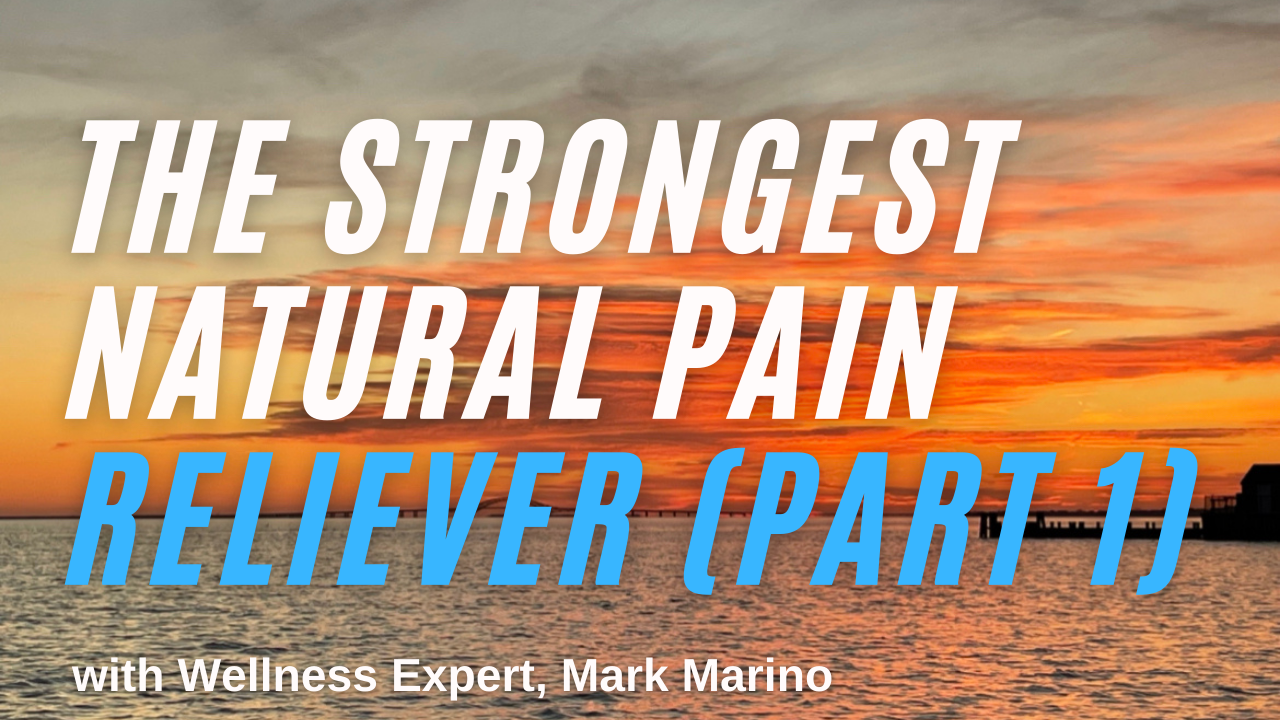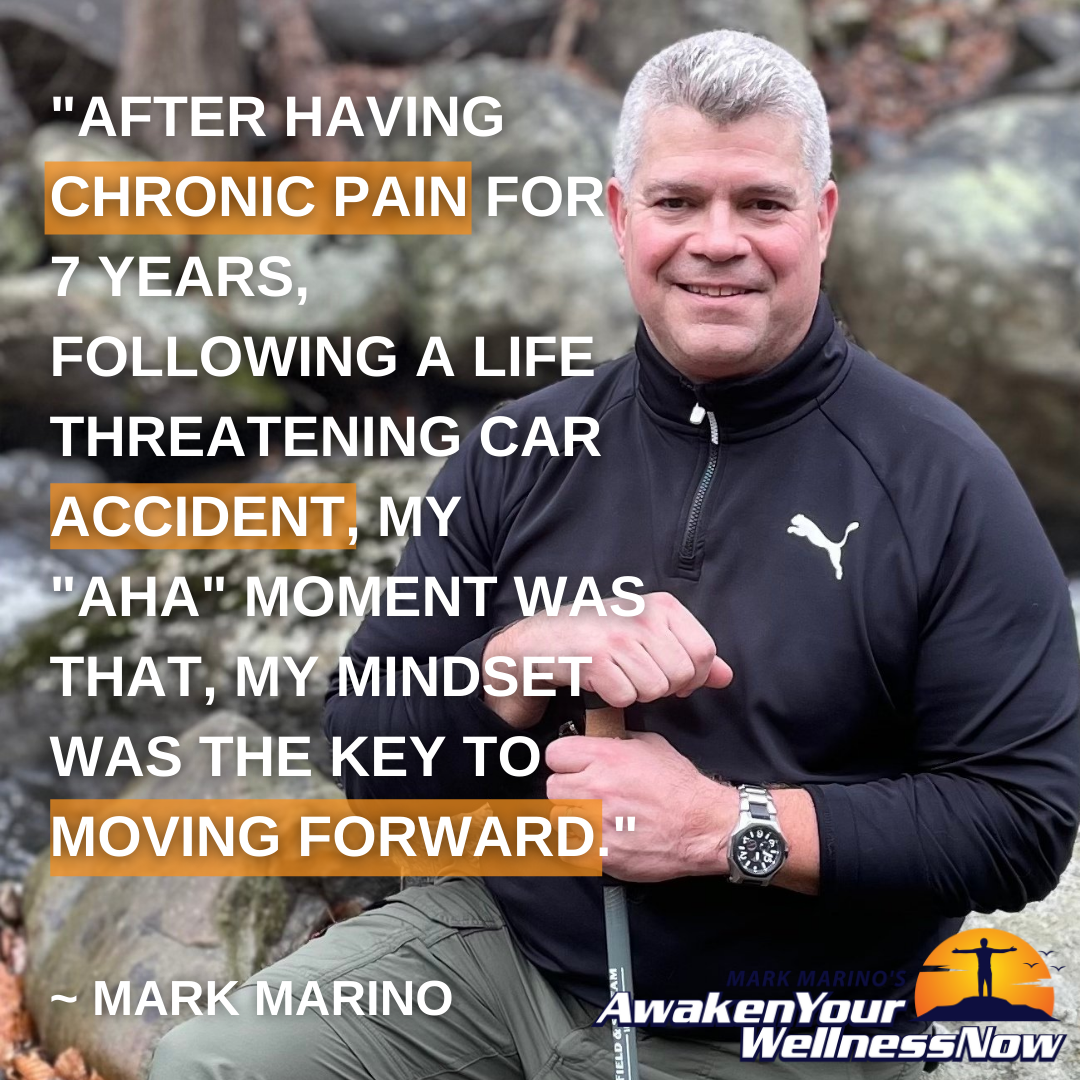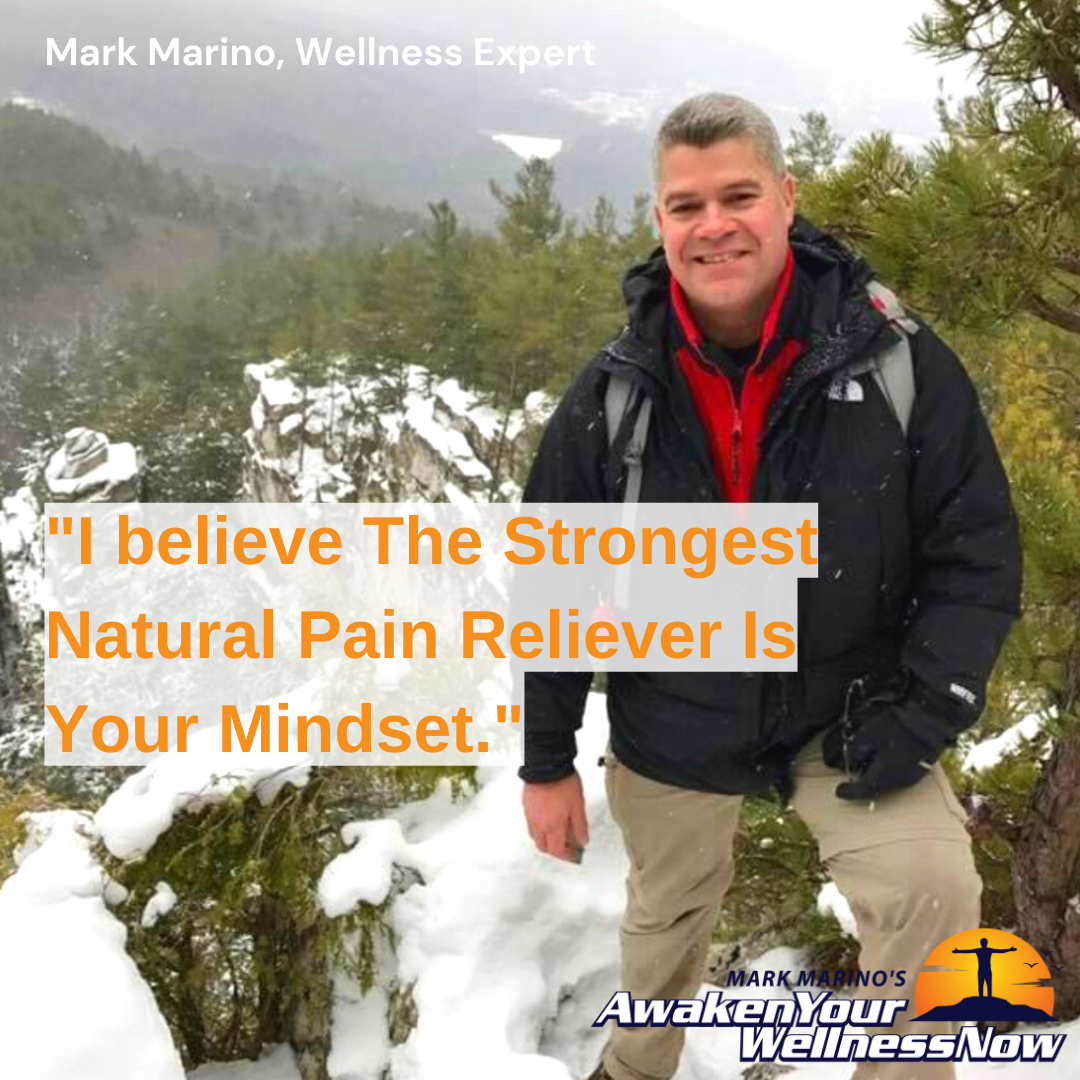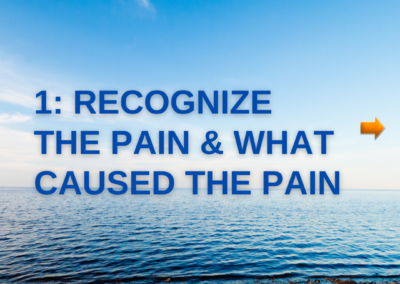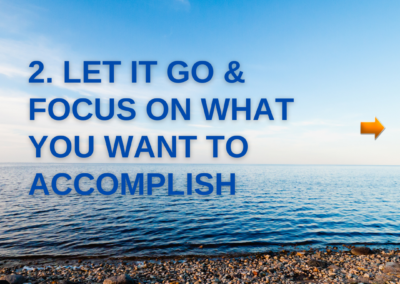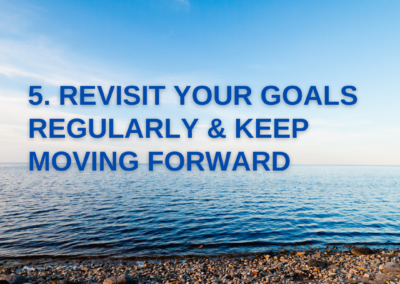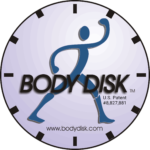The Strongest Natural Pain Reliever (Part 1)
So what is the strongest natural pain reliever?
Many of you may know me as a physical therapist. Now I’ve been a physical therapist for over 25 years and I’ve specialized in manual orthopedic physical therapy. And I’ve worked one-on-one with my patients for my whole career.
Now, it’s always been my goal and my intention to help people reduce or eliminate their pain and return them back to their fully functioning lives without pain.
I’ve treated all different types of people at all different ages, with all different types of injuries and in all different types of pain.
But the common denominator is that everybody that comes to see me, is in pain and they want to return back to a normal life without pain.
But the fact of the matter is that all of us experience pain, whether it’s physical pain or emotional pain, at some point in our lives and usually multiple times in our lives.
So today I’m going discuss and tell you what I believe is…
The Strongest Natural Pain Reliever
Now, before I tell you about what I believe is the strongest natural pain reliever, I want to tell you a little bit more about my history to give you a little context.
In addition to being a physical therapist, I’m also someone of who suffered with chronic pain for seven years. This came as a result of surviving a life threatening car accident about 25 years ago.
And the story goes… I was a physical therapist for only about a week, and I was also engaged to be married soon, and I happened to be driving in a friend’s car.
My friend made a turn left hand turn across traffic. A car happened to come over a hill too fast.
And BAM, the car “T-boned” our car right where I was sitting. I just remember the white lights and I woke up three days later in the hospital to find out that the fire department had to cut me out of the car because the car had folded up on top of me.
And because of the severe head wound, they had to helicopter me to the local trauma hospital, where I had a nine hour surgery where the orthopedic surgeons managed to put my leg back together.
I had eight fractures in my upper and lower leg. They put two long rods down the length of my leg; six screws, four cables in a plate!
I had fractured my low back as well at one level.
As the orthopedic sugeons were putting my peg back together, other surgeons were working on the wound that I had on my head.
I spent the week in the hospital and I didn’t walk for five and a half months. And I was out of work for almost a year.
There was a second surgery where they took out some of the hardware, but most of the hardware would stay in for what I would say is “the duration”.
So, you could imagine how I would go through some physical therapy myself.
So the first year I was a physical therapist, I actually spent most of it as a patient.
I returned to working as a physical therapist the next year, which again, in retrospect, is what allowed me and gave me the focus to become a the therapist I am today specializing in manual therapy.
So you could see how this would give me a lot more insight into what it feels like to have chronic pain and the different things that we experience as we go through it.
But before I tell you how I recovered from my chronic pain and how I got to the next level, I want to tell you a little bit more about pain.
Now, The sensation of pain involves the communication between our peripheral nerves, our spinal nerves and the brain. And there are different types of pain, depending on the underlying cause.
There’s Acute Pain..
…that can last anywhere from minutes to about three months. And sometimes it can last as long as six months.
Here’s an example of this pain is the pain you get. Let’s say, when you cut your finger. Acute pain could be felt during the healing process that occurs,… or you sprain your ankle or sprain your knee or you a temporary illness. And usually the pain subsides when the injury is healed or the illness subsides.
So the thing with acute pain is it can evolve into chronic pain.
Now chronic pain is longer in duration. It can be continuous pain or it can be intermittent, which means ,on and off.
Chronic pain is usually greater than six months, but can last for years. And sometimes certain patients, it can even last decades. Chronic pain can be from certain health conditions like arthritis, fibromyalgia, certain conditions of the spine of the neck and back. It can also come from other related illnesses as well.
There are different characteristics to pain as well.
When there is damage to the tissues of the body, people usually describe the pain as aching or throbbing pain. This is usually from a mechanical injury. Like you stub your toe or you drop something on your foot, or you cut yourself as a laceration, or you sprain your ankle or your knee, or you sprain your back or neck. And this is usually when there is damage to the tissues.
There’s also, what’s called Neuropathic pain where there’s damage to the peripheral nerves or other parts of the neural system. People usually describe this pain as shooting, stabbing, or burning pain. Sometimes it can be described as pins and needles.
There’s also what’s called Radicular Pain.
Radicular pain is when it’s specifically caused by a spinal nerve being compressed or inflamed, it can happen by a decreased room in the area with a spinal nerve exits. This can happen when there is a herniated or a bulging disc that puts pressure on the nerve root or stenosis narrows the space where the nerve runs.
This pain can be described as shooting or burning pain that radiates down the leg usually can go through the buttock down into the leg, as far as into the foot, depending on what nerve root is compressed.
And so you see you have all these different characteristics of pain. And the challenge with pain comes in the fact that everybody perceives pain differently. You could have somebody that breaks their leg, but yet apparently doesn’t seem to sense much pain. Or you could have somebody with a small injury that seems to create a severe level of pain.
You see, pain is mediated by nerve fibers, and it’s the job of these nerve fibers to send the message up to the brain (And this happens very quickly). But then the brain interprets the pain. So when the brain receives this message, it is your brain’s job to make you aware of the pain and then the brain analyzes the threat to your system which let’s us know what degree of pain we should feel.
And because everybody is different, this explains why everybody’s brain can react different to different pain stimuli. And this can also explain why pain perception and pain tolerance can differ so much from person to person.
This can also explain why somebody seemingly has a minor injury that can cause severe pain or somebody that seems to have a severe injury that seems to have very mild to no pain, and they shrug it off.
And that also brings up the concept of neuroplasticity.
Neuroplasticity talks about the nervous system of the brain’s ability to adapt and learn new things.
But unfortunately, sometimes with a brain’s perception of pain, you can have a heightened level of response or a hypersensitivity to pain, and it can lower your threshold to pain and it will take less and less and less stimulus to a elicit the pain response in your brain.
And this can causes problems with chronic pain. What happens is your pain producing mechanisms of your brain actually does too good of a job, and this can perpetuate the chronic pain cycle.
But there’s a silver lining to this because if we can be hypersensitive in our brain’s perception of pain, we can also desensitized it over time as well. I’ll talk more about this in a little bit.
There is also another issue with chronic pain, because chronic pain can evoke emotions like fear, anxiety overwhelm, and these emotions can permeate every aspect of our lives.
And there’s also issues where if you had a high level of stress, anxiety and overwhelm before you had an injury or before you had a trauma, this can also display with issues initiating or causing the evolution of chronic pain or the development from acute pain to chronic pain because of high levels of stress, anxiety, and overwhelm.
Now, when I was a physical therapist and I was experiencing chronic pain myself, it was a paradox for me because, here I was treating patients who were in chronic pain with all different levels of pain yet I was in chronic pain as well.
I finally got to a point where I said; “Enough Is Enough!” So I started to research everything I could about pain science, the psychology of pain, personal development, self growth, and what I found over time and what my epiphany was that it was My Mindset That Mattered Most with regard to what my relationship to pain was.
And once I had become aware of my mindset toward pain and towards the traumatic event that I had been through, and then I started to enhance my mindset, It made all the difference in the world. And over a period of about six months, I no longer had chronic pain.
And what I noticed with almost every chronic pain patient that I had, that they were caught in what I call… a Negative Mindset Pain Loop, where they had a negative bias with regard specifically to their mindset towards their pain.
And what I found was that..
“If you focus on pain, it perpetuates the pain cycle and your brain’s reaction to pain. But if you start to focus on wellness and what your goals are for what you want to accomplish, you will start to see things change.” ……Mark
But it’s not immediate. It doesn’t happen overnight. It takes time. As they say, “there’s no free lunch”. It takes hard work. And if you are willing to put the time in and work on it over and over and over again, to change your mindset, you’ll see all the difference in the world.
Your Mindset is a way of thinking or a set of beliefs that determines your outlook and your attitude in life. You see, your brain gives you more of whatever you’re focusing on most during your day. So when it comes to your chronic pain, if you continue to focus on pain, your brain gives you more pain. If you say, “WHY am I in so much pain?”, your brain will answer the question and give you all the reasons of why you’re in pain.
But if you focus on your wellness and what your goals are for what you want to accomplish, your brain starts to focus on solutions to those challenges. And you will then, instead of focusing on pain, you will focus on accomplishing your goals and you will slowly start to see your brain focus on wellness.
And the more you focus on wellness, the less you’re focusing on pain, and you will see the difference over time.
So now, as you can see, what I believe is…
The Strongest Natural Pain Reliever is…
Your Mindset.
Now, what I also found is this permeates into our everyday lives, even if you don’t experience chronic pain, but if you’re experiencing stress overwhelm anxiety that this works, as well.
As you start to focus on your mindset and change your focus to what you want in life and what you want to accomplish, your brain will start to focus on that more and less on stress and less on anxiety.
So if there is any good news about chronic pain, it’s that you can start to teach your brain to desensitize your brain’s perception of pain.
So, if I could tell you one of the primary keys for moving forward with the goal of reducing and eliminating your chronic pain, is to focus on becoming well, and focus less on, being in pain, Focus on what your goals are.
And, if right now, you don’t have goals, that’s one of the primary keys as well… is to set goals for what you want to accomplish.
Now, if there are a number of things that you can do to start to focus more on your enhanced mindset and focusing less on your pain to reduce your chronic pain. You can do things like meditation,
You can do guided imagery. You can focus on Tai Chi, yoga, Qi Gong. SOme would say that these would be considered “meditation in movement”. You can do breathing and relaxation techniques.
But, the first thing I would say to you, to be on the road towards reducing or eliminating your chronic pain is to focus on your mindset.
To focus on improving your wellness, focus on your goals. If you don’t have any goals yet set goals for yourself, for what you want to accomplish, with respect to your health and wellness.
And remember it doesn’t happen overnight. It’s hard work. It’s consistent work.
I know what it’s like to be in chronic pain. I know it’s not a fun place to be. But know that you are stronger than you realize, and you are in control.
Now, there is more content that I want to bring to you on this topic, so I will have “Part 2” next week.
So, check back in next week for content on How to use your Mindset as The Strongest Natural Pain Killer.
Well, I hope this information helped you out.
Be Positive, Be Motivated, Be Focused and Be Well,
Have a great day.
Mark
When you sign up to receive his blog updates via email.

